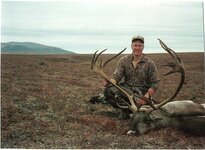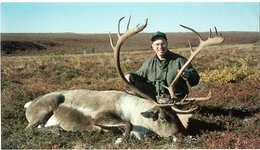The work was done as part of the IMP for the herd. As required in the IMP, a summary was presented to the BOG during the March meeting. The culling was done specifically on the calving grounds by state and federal aerial crews as a quick get in, get out operation and with as little disturbance to calving as possible. It would take a whole lot of camps, footsteps, hunting days, and negative disruption to calving for hunters to kill that many bears. AKFG finally does something about predators and people still find things to complain about.
The units are wide open for wolf and bear hunting and aerial permits are available for wolves. Have at it! Unfortunately, the 5 days I was able to make it out there in late March this year we sat around waiting on weather. But I'll be back a couple times next winter for some fun!
I wouldn't say it was climate change. The herd objective is 30-80K. They literally ate themselves to death and then got hammered by disease (hoof rot followed by brucellosis more recently). I believe there was a point where the limit was 5 a day and you could shoot same day airborne. There is also some really interesting literature about cyclical caribou populations. Some suggest the Mulchatna herd is on the high end of those swings, up to 40-60 years between it's peaks. Hopefully easing the predators will help speed it up, but the tundra takes decades to heal as well.




